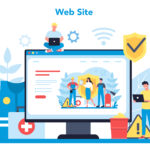Telemedicine: Revolutionizing Healthcare
In recent years, the landscape of healthcare delivery has undergone a profound transformation with the advent of telemedicine. This innovative approach leverages technology to bridge gaps in access to healthcare, improve patient outcomes, and streamline medical services like never before. In this post, we delve into how telemedicine is reshaping the future of healthcare and explore its myriad benefits, challenges, and promising future trends.
The Evolution of Telemedicine
Telemedicine, broadly defined as the remote diagnosis and treatment of patients using telecommunications technology, has its roots in the early experiments of telegraph and telephone communication in healthcare settings. However, its true potential began to unfold with advancements in digital communication, video conferencing, and mobile technology.
Benefits for Patients and Providers
Convenience and Accessibility
One of the primary advantages of telemedicine is its ability to enhance convenience for patients. No longer bound by geographical distances or travel constraints, individuals can consult with healthcare professionals from the comfort of their homes or local clinics. This accessibility is particularly transformative for elderly patients, those with disabilities, or individuals residing in rural or underserved areas where access to specialized care may be limited.
Improved Efficiency and Resource Utilization
For healthcare providers, telemedicine offers opportunities to optimize resource allocation and improve operational efficiency. Virtual consultations reduce wait times, minimize administrative burdens, and allow physicians to dedicate more time to patient care. Moreover, telemedicine enables better coordination among healthcare teams, facilitating multidisciplinary consultations and collaborative decision-making.
Technological Foundations of Telemedicine
Video Conferencing and Remote Monitoring
Key technologies powering telemedicine include secure video conferencing platforms and remote monitoring devices. These tools enable real-time communication between patients and providers, fostering meaningful interactions that mirror in-person consultations. Remote monitoring devices, ranging from wearable sensors to smartphone applications, empower healthcare teams to track vital signs, monitor chronic conditions, and intervene promptly when necessary.
Electronic Health Records (EHR) Integration
Integration with electronic health records (EHR) systems is essential for ensuring seamless continuity of care in telemedicine. EHRs enable clinicians to access comprehensive patient histories, review diagnostic reports, and update treatment plans securely. This integration enhances care coordination and supports evidence-based decision-making across virtual and traditional care settings.
Overcoming Challenges and Ensuring Quality Care
Regulatory Compliance and Reimbursement
Despite its transformative potential, telemedicine faces regulatory challenges related to licensure, reimbursement policies, and data privacy regulations. Healthcare organizations must navigate these complexities to ensure compliance with local and national healthcare laws while advocating for policy changes that support telemedicine expansion.
Patient Engagement and Care Coordination
Maintaining high standards of patient engagement and care coordination is crucial in telemedicine. Establishing trust, communicating effectively, and delivering compassionate care remotely require thoughtful strategies and ongoing provider training. Technology-enabled solutions, such as patient portals and virtual education materials, promote active patient participation and enhance health literacy.
The Future of Telemedicine: Innovations and Opportunities
Looking ahead, the future of telemedicine holds promise for further innovation and expansion. Emerging technologies, including artificial intelligence (AI), virtual reality (VR), and 5G connectivity, are poised to enhance diagnostic accuracy, personalize treatment approaches, and support complex surgical procedures remotely. These advancements underscore the potential for telemedicine to evolve into a comprehensive ecosystem that integrates predictive analytics, wearable health tech, and population health management tools.
Conclusion
In conclusion, telemedicine represents a paradigm shift in healthcare delivery, democratizing access to quality care, enhancing patient-provider interactions, and optimizing healthcare resource utilization. As technological advancements continue to accelerate, stakeholders across the healthcare continuum must collaborate to overcome challenges, expand telemedicine capabilities, and ensure equitable access to healthcare services globally.
Through continued innovation, regulatory support, and patient-centered care initiatives, telemedicine holds the potential to redefine the future of healthcare, making quality medical services more accessible, efficient, and responsive to the diverse needs of patients worldwide.






